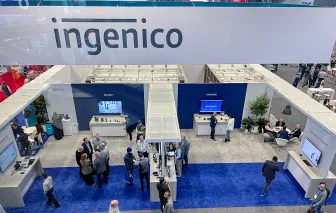Over the years, the restaurant industry has seen many technological innovations that have helped them serve their customers better. For example, QR codes recently made a comeback as an effective and touchless way for diners to access the menu.
In other situations, self-service kiosks and tabletop ordering with tablets have been instrumental in helping restaurants streamline their food ordering process and add more efficiencies for their business.
One concept that has stood out amid all the innovations is Pay-at-the-Table. Pay-at-the-Table represents a shift in payment acceptance within restaurants where instead of the diner handing their credit/debit card to the server, the payment process is brought to them. The implementation of this solution has had several iterations - from using wireless terminals to tablet-based solutions, but in essence, Pay-at-the-Table allows restauranteurs to overcome four key challenges:
Restaurant Challenges and How Pay-at-the-Table Helps Solves Them
1. Card Fraud
Restaurants are easy targets for fraudsters to steal credit card information. When a customer hands over their payment card to staff to pay, there are times when the information gets copied and used to create counterfeit cards. Restaurants can tackle this by taking the payment acceptance directly to the diner at their table. This way the customer never loses sight of their payment card and is at ease about the security of their sensitive information. Pay-at-the-Table also enables restaurants to accept contactless payments – which is likely to grow in adoption even after the pandemic is behind us. Whether customers use their contactless cards or mobile wallets, a Pay-at-the-Table solution will give them complete control while they pay.
1. Table turns
Restaurants that are looking to expand their business can do so by increasing the average table turnover to serve more customers. This is where a Pay-at-the-Table solution can help. Instead of the server going back and forth between the table and their POS system for completing the transaction, a Pay-at-the-Table solution can help simplify this by taking the entire process directly to the diner. While it may seem that the server is only saving 10-15 minutes per table but added up, it can allow restaurants to serve more customers in the time saved on a given day. This solution allows restaurants to remove friction from the payment process and create a seamless transition between different customers.
3. Reconciliation
The best functioning restaurants rely on the high efficiency of their staff and ensuring that time is not spent on activities that can be solved by technology. In a traditional payment scenario, closing out bills (also known as reconciliation) takes a long time, as servers add the tip amounts to the entire order after the payment has been initially authorized. Usually, this task is done at the end of the server’s shift and involves them using the main POS system to enter all the order numbers and adjusting the final amounts. An integrated Pay-at-the-Table solution allows the customers to directly enter the tip amount on the wireless terminal. This saves staff time on the reconciliation process and helps improve overall operational efficiency for the restaurant.
4. Customer Experience
While good quality food is the primary reason for diners to return to a restaurant, a good customer experience is still critical to gaining their trust and loyalty. Pay-at-the-Table solutions allow restaurant staff to better engage with their customers, focus on their needs, and help make their overall experience an enjoyable one. Many wireless solutions (including Android-based terminals) allow restaurants to take food orders directly on the device. This helps improve order accuracy and speed of service as the orders are electronically sent to the kitchen and bar staff.
Pay-at-the-Table Should Be Table Stakes
Customers across multiple verticals like having control over their buying process and bringing payment acceptance to them enables businesses to give the control back to the customers. While Pay-at-the-Table has been a known and effective industry-standard in countries like Canada, other places such as the U.S. and Mexico are increasingly adopting this method. It allows fine dining and fast-casual restaurants to not just create better customer experiences, but also improve the overall efficiency of their businesses. From helping curb card fraud to improving table turns and providing a great customer experience, this solution enables restaurants to take their business to the next level.
If you are looking for ways to implement a Pay-at-the-Table solution in your restaurant business, get in touch with us.
Josephine Parisi is Sr. Relationship Manager, Canada at Ingenico
Featured photo by Spencer Davis on Unsplash











